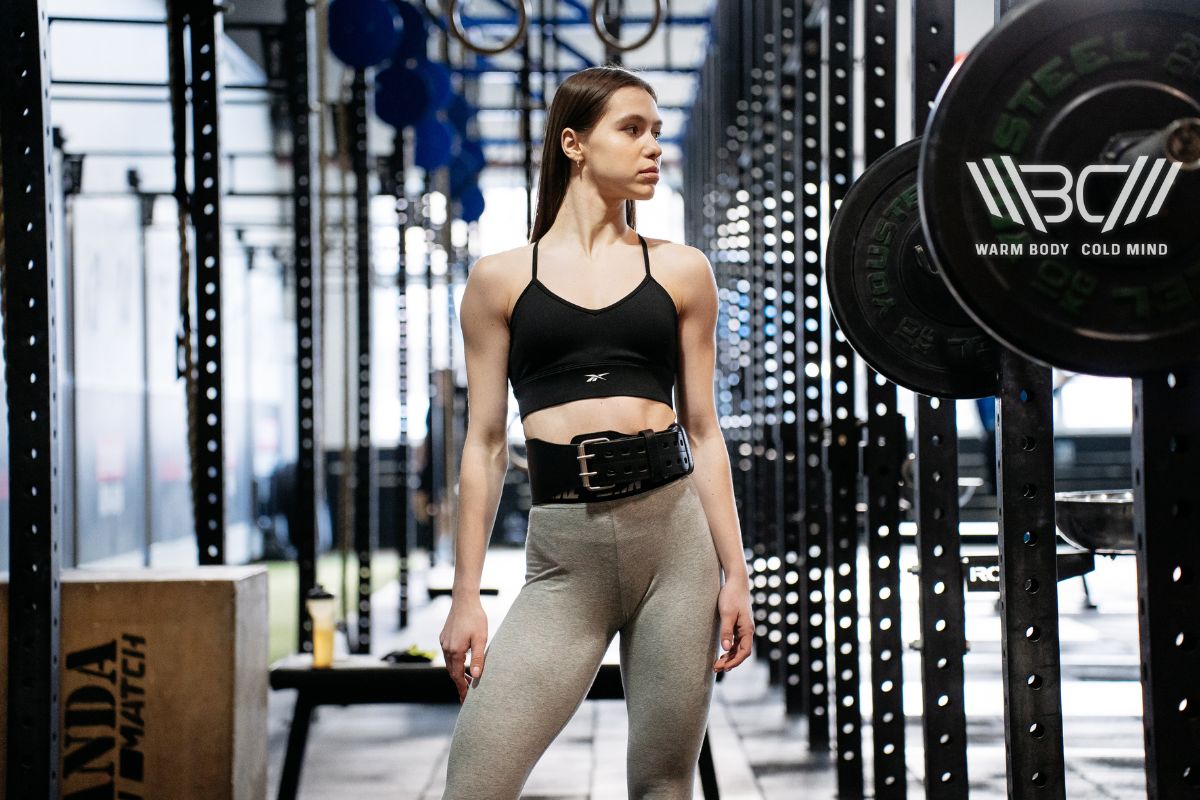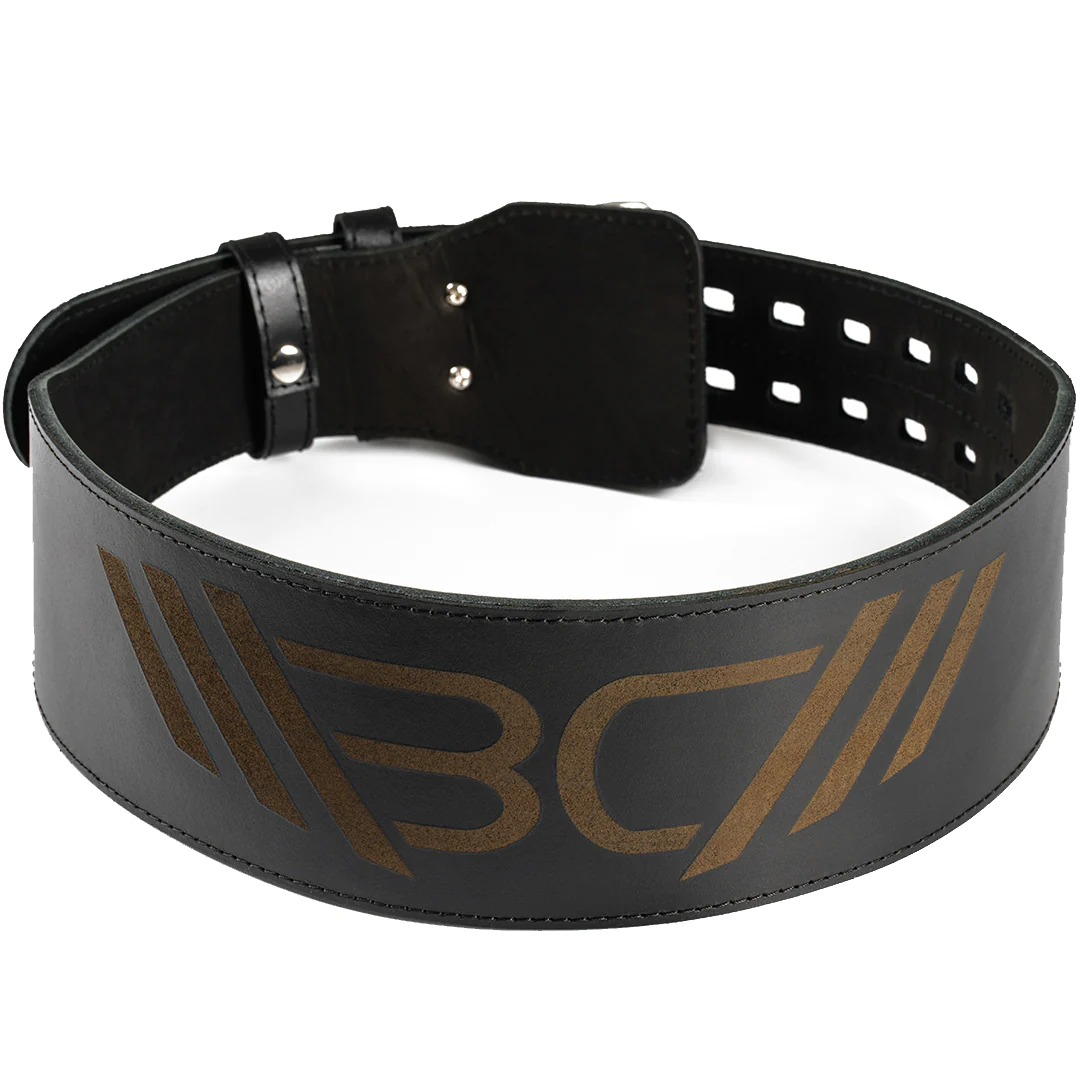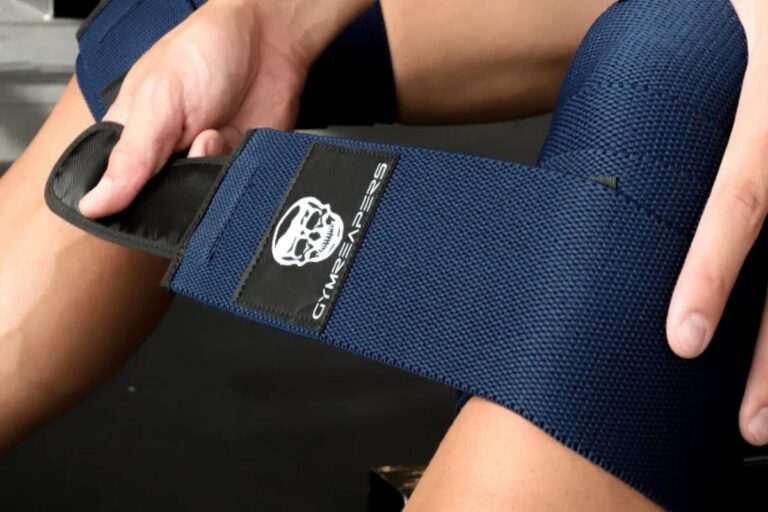How To Break In A Lifting Belt For Instant Use
So, your brand-new weightlifting belt finally arrived. You unbox it and take a good whiff of the fresh leather scent. You’re excited to hit the weights, but there’s one problem: it’s stiff as a rock. Sound familiar?
No worries, here’s how to break in a lifting belts so that you can use it right away. Breaking in a new belt can feel highly motivating towards your next workout, and the better half of the process can be accomplished in a few minutes with just your hands.
How To Break In A Lifting Belt – Roll up the belt from both sides. Repeat a few times, bending only as far as the leather allows. Avoid applying force to break in a leather belt as it can crack. Use leather conditioner and keep it rolled when not in use.
What Is A Weightlifting Belt?
A weightlifting belt is a type of belt commonly used in popular barbell resistance exercises like squats and deadlifts. Despite its name, a weightlifting belt is not worn around your waist like a classic clothing belt, but rather around your core and lower back.
When properly worn, weightlifting belts increase intra-abdominal pressure in your core area by up to 40% vs. when not wearing a belt. Intra-abdominal pressure serves as a wall to support the Lumbar spine, the section of the spine that sits between your hips and ribs.

This “wall” stabilizes the Lumbar spine during heavy lifts, preventing unwanted movement and reducing harmful compressive forces on the spinal discs, which are a common place for weightlifting injuries.
What Does It Mean To Break In A Lifting Belt?
Breaking in a new belt refers to the process of making it comfortable and fitting to wear. New lifting belts made of leather aren’t ready for use right out of the box. Initially, a belt arrives as flat as a plank of wood and may be too rigid to comfortably wrap around your body.
It may take a couple of exercise sessions before it starts feeling better. That’s why it’s important to condition flex a new belt before you attempt to use it. Some of the most common methods, we’ll discuss in a second.

Enhance your strength training with Warm Body Cold Mind leather weightlifting belt providing exceptional support and durability.
Why Do You Need To Break In A Lifting Belt?
So, why is breaking in a belt important, and why can’t you just use it out of the box? Here are some reasons:
1. Stiffness
When you get a new and unused leather lifting belt, it will be flat and stiff. Moreover, the material will likely come dry and brittle. In that state, you won’t be able to wrap it around your body immediately. If you try breaking into a belt by force, you might end up cracking or creasing the material. At the very least, this can ruin the belt’s aesthetic, but more importantly, a damaged belt might not do the job properly

2. Flexibility
A brand-new lifting belt lacks the flexibility to take on a workout. In this state, it will restrict your range of motion. Breaking it in allows it to flex under the movement. There are a few steps that you can take, which we’ll touch on in a second, to make the leather softer and more flexible.
3. Comfort
A belt that isn’t broken into can be quite uncomfortable to wear. The leather edges, before they soften up, can dig into your skin, ribs, and hips and at the very least cause discomfort, not to mention the potential for developing bruises and abrasions due to the friction caused by exercise combined with the tight and rigid fit. Additionally, a belt that isn’t evenly broken into may not provide adequate 360-degree support from all sides.

How Long Does It Take to Break In a Lifting Belt?
No matter how much you condition a new leather belt, the best break-in it will receive is simply reacting to your body doing exercise. If you start employing it right away for lighter and less mobility-intensive exercises, you’re looking at a couple of weeks of wear time before it feels perfect.
This is assuming you train at least three times per week. Expect you’ll have to use it for at least 3-4 weeks before it takes shape. Thinner belts may react faster than that, but thick powerlifting belts may require a month or so.

Discover the strength of the Warm Body Cold Mind nylon lifting belt. Lightweight and durable, it provides optimal support for your workouts.
What Determines How Quickly You Can Break In A New Lifting Belt?
The necessary time for breaking in a new belt is different from belt to belt and depends on their specs. Here are some factors that come into play:
1. Material
The golden standard material for weightlifting belts is leather. That said, there are different types of leather as well as leather finishes that will determine how easily it will bend without breaking. Generally speaking, expensive higher quality leather will be more flexible and resilient than say cheaper faux leather.

Meanwhile, belts made from a suede outward finish technically might not be easier to break in than their leather counterparts, but actual leather is more prone to damage (creases, cracks, etc.) so you’ll have to be more careful. It’s also important to mention belts made from synthetic polymer materials such as nylon.
The material is quite flexible, so belts made from it have almost no break-in time and are ready to go pretty much out of the box. However, these belts are (generally speaking, but obviously varying from brand to brand) not as durable as leather.
2. Leather Quality
The time it takes to break in a leather belt also depends on the leather quality. Higher-quality leather is more refined and processed to be more supple and flexible right out of the box. It should bend noticeably softly after a few rolls inward and outward. Lower-quality leather is more stiff and brittle, making it harder to fold in and out. Not only that, but you have to be extra careful not to crack it.

3. Belt Thickness
Weightlifting belts vary in thickness depending on their intended sport. Thinner belts catered to a wider user base usually go from 4-6mm, while heavyweight belts can go from 10-13mm. Thereby, It’s naturally harder to break in a powerlifting belt than a standardized 6mm weightlifting belt. The principle is simple, the thicker the material, the harder it is to bend in on itself. Think of how easier it is to fold a single sheet of paper than the entire notebook.

4. Belt Width
Standardized lifting belts are usually 4 inches wide, though there are exceptions, and it can also depend on possible tapering and contouring. Belt width can also determine the break-in time of your belt, similar to thickness. A wider belt has a bigger surface area, which will take more pressure to bend, especially towards the middle.

5. Hardware
Most belts use some form of metal fastening system to adjust the fit. These usually come in traditional belt prongs, release levers, or a metal hook & loop clasp. Out of these, it may be easiest to break in a lever belt, since the mechanism comes detached from the leather.

That means you can work on the leather separately until it flexes, and attach the lever for the exact fit later. Belts with pre-attached hardware might be a bit harder to flex at first because you have to be careful about bolts and stitching when trying to roll it.
Subscribe!
The latest reviews of must-have home gym training equipment, apparel, and supplements that will enhance your performance and bring you new results.
How To Properly Break In A Belt For Lifting?
Next, let’s talk about how to break in a weightlifting belt easily and without damage. It’s important to do this right to avoid breaking the belt and causing it to lose integrity, thus rendering it useless.
1. Roll It
The first recommended step out of the box, as touched upon in the intro, is to roll the belt into a loop to slowly flex the leather. Grab it from any side and slowly roll it down, then unroll and flip and do the opposite side as well. Repeat a few times and feel out the material after each.
Over time, it should start to roll more easily. At first, it’s important to start gently and only bend it as far as the leather allows you to, without applying external pressure. Eventually, it will start taking a more oval shape.
You can also leave it tightly rolled for a few hours before you try using it, and also store it rolled up as well. Moreover, make sure to leave it in a room with regular temperature. Leaving it in too much heat can harden the leather, while a room that is too moist may facilitate the buildup of mold. Preferably, pack your belt inside a storage bag or shelf.

2. Spray With Water
Fill a sprayer bottle with some lukewarm water and spritz it onto the leather surface, then leave it to soak in. Be careful not to use too much water, use light sprays, don’t soak it or wash it down.
Leave the lightly damped surface to air dry, the leather should absorb some of it. Once it seeps in, it should soften up the material. After, gently massage the material to push out excess moisture. Now you can try the rolling method again.
3. Apply Conditioner
Similar to water spritzing, you can use a leather conditioner to soften up the leather. Whether it’s a creme or spray variant, apply a thin layer to the leather surface and wait for it to absorb. This method is also great because good leather conditioners create a protective surface on the material, further increasing its resistance to wear and tear.
However, be very careful to choose the right conditioner for your type of leather, whether it’s genuine, full-grain, faux, etc. Natural oil, such as avocado or coconut oil, is also a good substitute, just make sure it doesn’t have a high alcohol as that could dry out and damage the leather surface. For a good resource on the types of leather and softening methods, click here.
4. Walk Around With It
After you’re done softening the leather up using the above-mentioned methods, it’s time to try it on. If you can put it on, try walking around with it for a bit so that the softened leather can take in your body shape. If it’s still too stiff to fold normally around your back, repeat the softening process.
Are There Lifting Belts That Do Not Require Severe Break-In?
Our Recommended Leather Belt – WARM BODY COLD MIND Leather Weightlifting Belt
Our premier leather weightlifting belt is built upon decades of professional and competitive experience. For its construction, we chose high-quality genuine A-grade leather, 6mm thick for the perfect blend between support and comfort. The double-prong stainless steel buckle is virtually indestructible.

The backside is a standardized 4 inches wide, and the belt tapers in the front sides to leave more room for breathing. Apart from the classic black leather look, it comes in eight other design combinations.
Our Recommended Nylon Belt – WARM BODY COLD MIND Nylon Weightlifting Belt
Our nylon belt offers unmatched versatility and convenience. It’s ready to use straight out of the box and the flexible material perfectly takes shape of your core and back, giving you excellent comfort and support. The main body is a standardized 4 inches wide, and it comes in 5 sizes (S, M, L, XL, XXL).

The fastening mechanism uses a quality quick-locking metal clasp and a durable velcro strap. We’re also giving you the option of four popular colors, including black, blue, pink, and khaki.
What Not To Do With A New Lifting Belt?
So, we’ve talked about some do’s, let’s mention some don’ts. Here’s what not to do with a new belt if you want it to last:
1. Don’t Go Heavy
As per the reasons mentioned above, trying to employ a new belt immediately into heavy exercise can at the very least be uncomfortable, cause you mild injuries by cutting into your body, and break the material. Start with lighter versions of your favorite exercises to help the belt mold to your shape
2. Don’t Let It Hang
Lots of lifters who train at home like to leave their belt hanging from their rack. While it looks cool, proper storage in the initial weeks of use can help you break it in quicker. Remember to wipe it down from sweat after use, condition the material, and roll it up. Store it in a cool and dry place, such as a closet or drawer, and keep it away from sunlight.

3. Avoid Harsh Cleaners
After a particularly intense and sweaty session, it’s important to wipe it clean. The proper instructions for doing this will be in the user manual. Avoid using harsh cleaning chemicals, especially if they have a high alcohol percentage. They will dig into the outer layer and ruin the look of your brand-new belt. Usually, a mild soap and water will suffice.
FAQ
What Belt Material Is Easy To Break In?
A nylon lifting belt is typically the easiest to break in since the material is naturally flexible. In fact, you could say that nylon belts don’t have a break-in time at all. In addition, it takes more effort to break in a powerlifting belt of up to 13mm thickness than a standardized 4-6mm weightlifting belt.
What Happens If You Don’t Break in Your Lifting Belt?
If you try and skip breaking in a new belt before using it, first of all, there’s a good chance it won’t curve evenly around your body. Second, the stiff material can cut into your skin and muscles, depending on the tightness. Finally, a belt that isn’t adapting to your body shape can limit the range of motion, making it uncomfortable to wear. This comes especially true for leather belts.
How Do You Get Used To A Lifting Belt?
The most important thing is to know how to properly employ a belt. Remember that it should be tight, but not too tight, you should be able to slip in two or three fingers on your side when you’re relaxed.
When breaking in a belt, start by using them in shorter sessions first and only employ them when they’re most necessary, which is when you’re lifting closer to your single-repetition maximum (70, 80, 90% of your 1RM) and less than 8 reps.
Conclusion
And that’s how to break in a lifting belt. Getting a new belt is exciting, but that excitement can quickly turn into discomfort if we don’t take the time to treat the leather before use. It takes more time to break in a leather belt than a nylon one, but the process is simple and you learn some tips on taking care of leather in general.
Always start by rolling the belt to flex the leather gently. Consider applying a light mist of water or leather conditioner to soften it further. When storing, remember to keep it rolled to maintain its cylindrical shape effectively.
We’d love to hear from you as well. Tell us what your favorite weightlifting exercise is, as well as any achievements so far (max reps, sets, etc.) Leave a comment below and make sure to follow us on social media for related fitness content.
References:
- Brett Sassack, Jonathan D. Carrier, “Anatomy, Back, Lumbar Spine,” (StatPearls [Internet], Treasure Island, FL., 2023).
- Carole Dignard, Janet Mason, “Caring for leather, skin and fur,” Government of Canada, Canadian Conservation Institute (2018).
- https://www.canada.ca/en/conservation-institute/services/preventive-conservation/guidelines-collections/caring-leather-skin-fur.html (accessed Feb. 11, 2024).
- E. A. Harman, R. M. Rosenstein, P. N. Frykman, G. A. Nigro, “Effects of a belt on intra-abdominal pressure during weight lifting,” Medicine & Science in Sports & Exercise vol. 21, no. 12 (1989), 186-190.
- J. E. Lander, R. L. Simonton, J. K. Giacobbe, “The effectiveness of weight-belts during the squat exercise,” Medicine & Science in Sports & Exercise vol. 22, no. 1 (1990), 117-126.
- J. E. Lander, R. L. Simonton, J. K. Giacobbe, “The effectiveness of weight-belts during multiple repetitions of the squat exercise, ” Medicine & Science in Sports & Exercise vol. 24, no. 5 (1992), 603-609.
Author: Jason Li
Personal Coach | Functional Range Conditioning Mobility Specialist
Jason is an NYC personal training expert and National level Olympic Weightlifting Coach with over 10 years of experience training everyday clients to high levels of performance. He has trained everyone from youth (13 years old and under) to masters (60+ years old) to regional and national rankings for powerlifting, Olympic Weightlifting, Short distance (up to 200m) sprinting, discus & hammer throwing.












